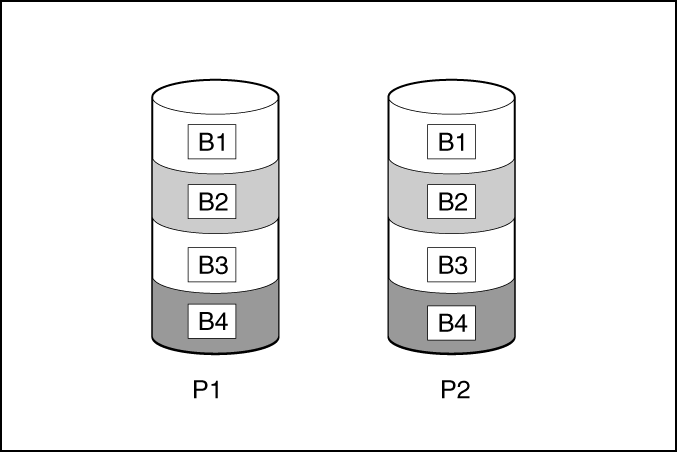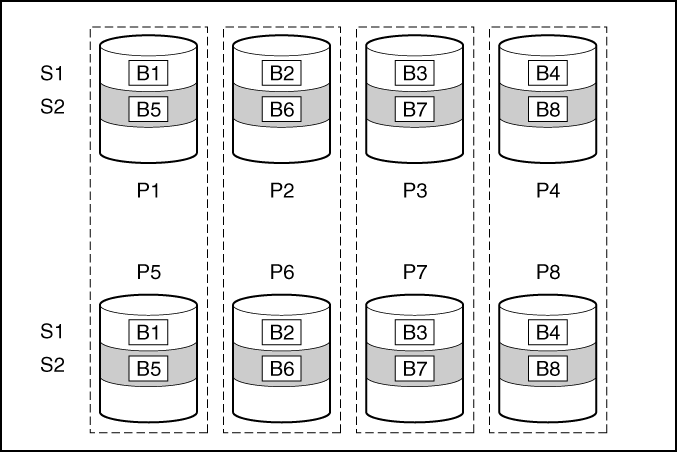RAID 1 and RAID 1+0 (RAID 10)
In RAID 1 and RAID 1+0 (RAID 10) configurations, data is duplicated to a second drive. The usable capacity is C x (n / 2) where C is the drive capacity with n drives in the array. A minimum of two drives is required.
When the array contains only two physical drives, the fault-tolerance method is known as RAID 1.

When the array has more than two physical drives, drives are mirrored in pairs, and the fault-tolerance method is known as RAID 1+0 or RAID 10. If a physical drive fails, the remaining drive in the mirrored pair can still provide all the necessary data. Several drives in the array can fail without incurring data loss, as long as no two failed drives belong to the same mirrored pair. The total drive count must increment by 2 drives.

This method has the following benefits:
-
It is useful when high performance and data protection are more important than usable capacity.
- This method has the highest write performance of any fault-tolerant configuration.
- No data is lost when a drive fails, as long as no failed drive is mirrored to another failed drive.
- Up to half of the physical drives in the array can fail.